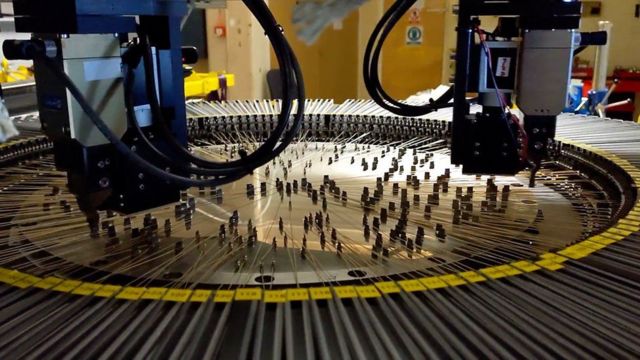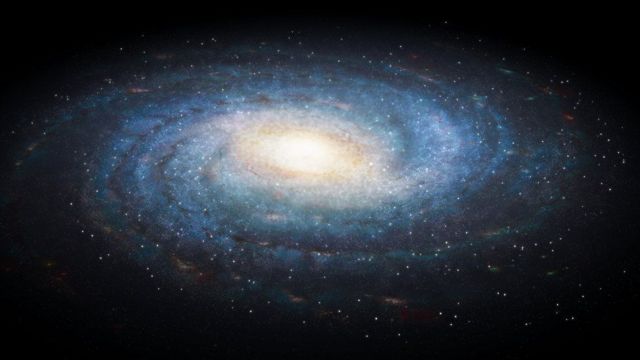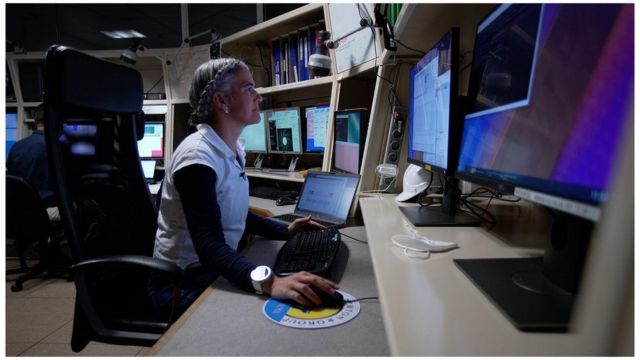image source, IT’S
—
Where do the stars in the sky come from?
–
30 minutes ago
Scientists have equipped one of the most powerful telescopes on Earth with new technology that will reveal how our galaxy, the Milky Way, formed in unprecedented detail.
–
The William Herschel Telescope (WHT) in La Palma, Spain, will be able to survey 1,000 stars per hour, for a total of five million stars.
–
The super-fast mapping device connected to the WHT will analyze the arrangement of each star and the speed at which they travel.
–
This method will show how the Milky Way galaxy formed over billions of years.
–
Professor Gavin Dalton of the University of Oxford has spent more than a decade developing this instrument, known as the ‘Weave’.
–
Dalton said he was very excited and the tool was ready to go.
–
“It’s a fantastic achievement by a lot of people, to make this happen and it’s great to make it work,” he said. “The next step is a new adventure, it’s brilliant!”
–
The BBC’s Science Correspondent Pallab Ghosh is meeting with scientists on a mission to discover where the stars we see in the night sky come from.
–

image source, GAVIN DALTON
—
Weave’s agile robotic fingers position a thousand optical fibers precisely, each pointing to a star.
–
Weave has been installed in the WHT, which is located on the mountaintop of the Canary Islands, Spain. His name is an abbreviation of WHT Enhanced Area Velocity Explorer.
–
This tool has 80,000 separate parts and is a marvel of engineering technology.
–
For each slice of the sky the WHT points to, astronomers identify the positions of a thousand stars.
–
Weave’s agile robotic fingers then carefully place optical fibers – light-emitting tubes – at each location on the plate, pointing at the appropriate star.
–
These fibers are basically small telescopes. Each captures light from one star and transmits it to other instruments.
–
These fibers then divide it into a rainbow spectrum, which contains the secret to the origin and history of the star.
–
All this process is completed in just one hour. While the tool is in progress, optical fibers for the next thousand stars are positioned on the reverse side of the plate, to analyze the next set of targets even after the previous survey is complete.
–

image source, Science Photo Library
—
The Milky Way is surrounded by “dwarf” satellite galaxies.
–
Our galaxy is a dense spiraling vortex of up to 400 billion stars. However, the Milky Way started as a relatively small collection of stars.
–
The Milky Way grew from successive mergers with other small galaxies over billions of years.
–
Aside from the addition of new galaxies joining us, each merger is enough to move things around to lead to the formation of new stars.
–
Weave is able to calculate the speed, direction, age, and composition of each star it observes, thereby creating moving images of the moving stars in the Milky Way.
–
According to Prof Dalton, by extrapolating backwards, it is possible to reconstruct the entire formation of the Milky Way in detail that has never been seen before.
–
“We’ll be able to track those galaxies that have been absorbed because the Milky Way has built up over cosmic time – and see how each absorption triggers new star formation,” he said.
–
Dr Marc Balcells, who is in charge of WHT, told BBC News he believes Weave will bring about a major shift in our understanding of how galaxies are made.
–
“We have heard for decades that we are in the golden age of astronomy – but what awaits the future is far more important.
–
“Weave will answer astronomers’ questions for decades such as how many pieces came together to make a large galaxy and how many galaxies came together to make the Milky Way.”
–
 —
—
Instrumentation specialist Dr Cecilia Farina says Weave may encounter unexpected phenomena
–
Dr Cecilia Farina, instrumentation specialist on the project, said she believed Weave would make astronomical history.
–
“There are so many things we’re going to find that we didn’t expect to find,” he said. “Because the Universe is full of surprises,” he said.
—


